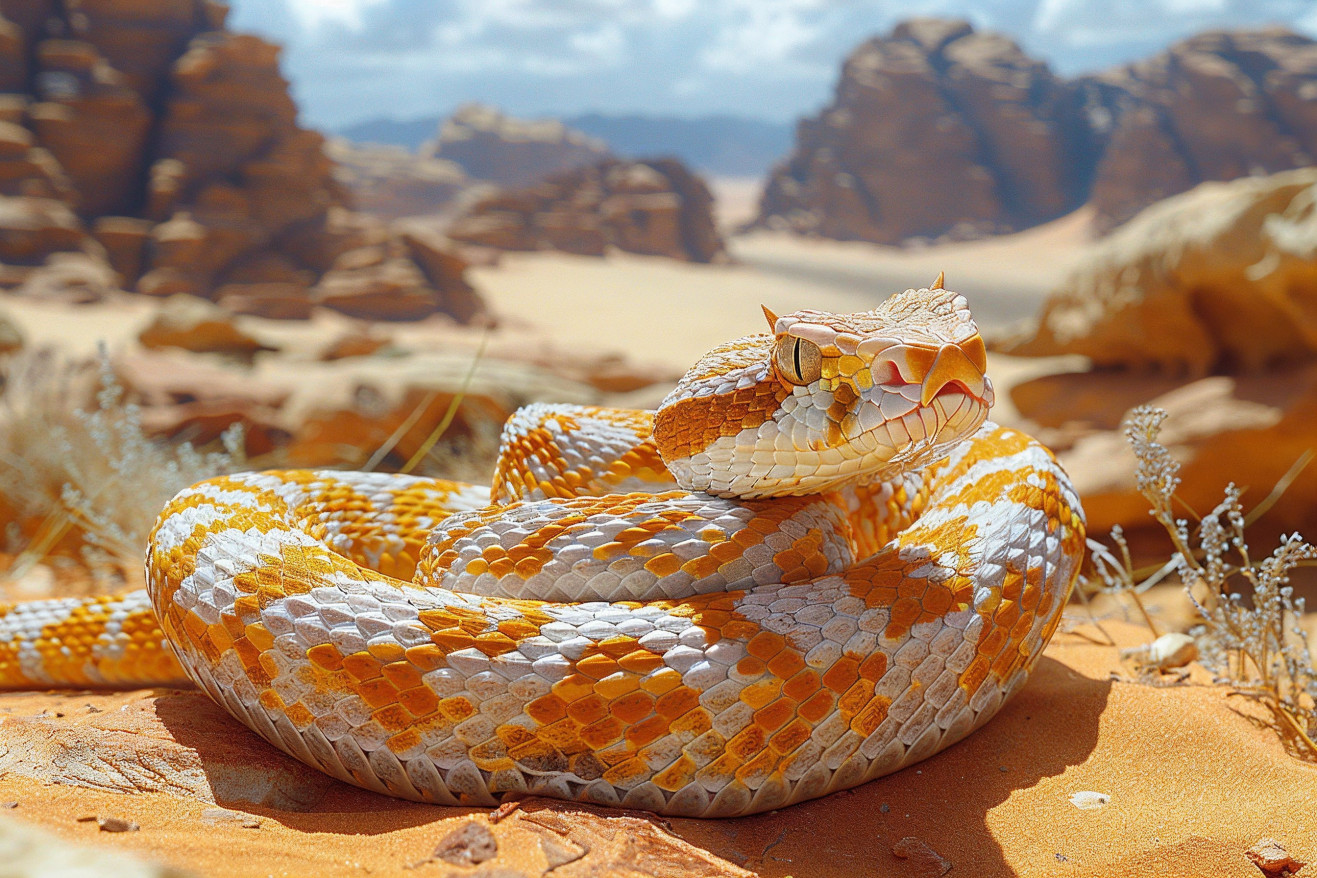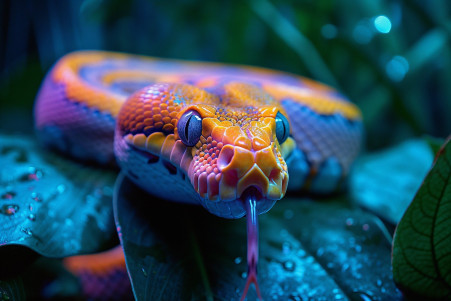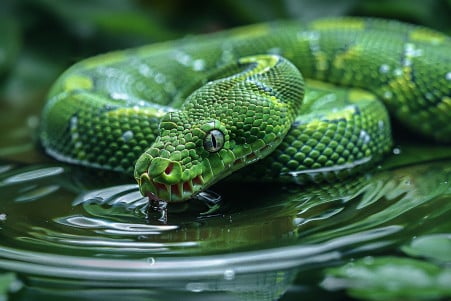Where Do Snakes Live? Exploring Their Diverse Habitats Worldwide
10 June 2024 • Updated 10 June 2024

From the desert to the rainforest, snakes have evolved to live in a wide range of environments. Snakes can be found on every continent except Antarctica, and in nearly every type of ecosystem, including tropical rainforests, remote islands, deserts, grasslands, and even urban areas. Their ability to burrow, climb, and swim has enabled them to adapt to a variety of ecosystems.
To learn more about the incredible diversity of snakes and the environments they inhabit, we will review scientific research on snake biology, behavior, and ecology. This will help you understand the research on their habitats, diets, reproductive strategies, and unique adaptations, and learn what makes different environments suitable for different species of snakes. In addition, this exploration of snake habitats will help you understand the complex ways snakes interact with their environments and why it's important to protect them.
Where do snakes live?
Snakes in Rainforests and the Tropics
According to Study.com, tropical rainforests are home to many snakes because of the warm, wet weather and the number of animals to eat. The venomous Terciopelo pit viper is an example of a snake that lives in the thick vegetation of the rainforests of Central and South America. Meanwhile, in Southeast Asia, king cobras and reticulated pythons live in the lowland forests and wet savannas where they hunt small mammals and birds.
The Gaboon viper, the world's heaviest viper, can be found in the cashew plantations and farmlands that stretch across the equatorial regions of Africa. These snakes have evolved to live in the tropical environments of the rainforest and the tropics with a variety of specializations, including camouflage, the ability to live in trees, and the evolution of especially powerful venoms.
As Save The Snakes points out, these snakes and their habitats are threatened, but many organizations are working to save them and their homes through education and community-based programs. The tropical weather and the availability of food make the rainforest an especially good place for a number of snakes to live.
Snakes That Live in the Desert and Their Specialized Adaptations
Snakes that live in the desert face a number of obstacles, including extreme temperatures, a lack of water, and a limited food supply. Still, there are a number of snakes that have adapted to these harsh conditions in order to survive. For example, the sidewinder rattlesnake's side-winding movement allows it to save energy and move more easily across the sand in the desert, according to Study.com. Meanwhile, kingsnakes and other species that live in the deserts of the southwestern U.S. and Mexico have evolved heat-sensing pits that help them find warm-blooded prey, according to Quora.
Meanwhile, some desert snakes, like the Western Diamondback Rattlesnake, have adapted to be able to swim and seek refuge in burrows or crevices when the desert becomes too inhospitable, according to the U.S. Forest Service. These are just a few examples of the many ways that snakes have adapted to life in the desert. Other adaptations include camouflage patterns, water retention abilities, and hunting strategies that have evolved to help these snakes survive in the desert, according to Quora. These adaptations are a testament to the incredible ways that snakes have adapted to life in the desert.
Sea Snakes: The Ultimate Water Dwellers
Although most snakes are land-based, there are approximately 70 species of snakes that have adapted to marine and freshwater environments, notes National Geographic. Sea snakes, such as the yellow-bellied sea snake and banded sea krait, are some of the most venomous snakes in the world and have evolved to breathe underwater with the help of specialized lung modifications.
Freshwater snakes, such as the diamondback water snake and northern water snake, live in rivers, lakes, and marshes and eat fish and amphibians, explains Study.com. These snakes have evolved a number of adaptations, including paddle-shaped tails, nostrils that can be closed to keep water out, and the ability to excrete salt from their bodies, that help them survive in their watery habitats.
Reef shallow snakes live on the ocean floor and eat moray eels and other small fish, and some snakes, like the anaconda, are semi-aquatic, living in and around bodies of water, reports the University of Melbourne. The adaptations of these different aquatic snakes demonstrate how flexible and successful these reptiles are at adapting to a wide range of environments.
Venomous Snakes: Potent Predators and Defensive Weapons
Venomous snakes use their venom for both hunting and defense against predators, including humans, notes the CDC. Snake venoms are made up of a complex cocktail of proteins, enzymes, and other molecules that can be neurotoxic, hemotoxic, or cytotoxic, explains BBC Science Focus Magazine.
Elapid snakes, such as cobras and coral snakes, produce neurotoxic venoms that interfere with nerve signals, while viper venoms are usually hemotoxic, interfering with blood clotting, according to Wildlife SOS. The exact composition of snake venom is highly variable, even within species and populations, and is influenced by factors such as dietary preferences and evolutionary history, notes a study in Nature Reviews Chemistry.
Knowledge of snake venom composition and its effects is important for the development of antivenoms and the investigation of potential medical uses, says the National Institutes of Health. This information is also important for combatting the major public health problem of venomous snakebites, which result in as many as 138,000 deaths and 500,000 cases of venom-induced morbidity annually.
Conclusion: Snakes’ Amazing Adaptability to Different Environments
Snakes have evolved to live in a variety of ecosystems around the world, including tropical rainforests, deserts, and even urban environments. Their physical and behavioral adaptations, including camouflage, specialized hunting behaviors, and venom, have allowed them to survive and thrive in these different environments.
Recognizing the different ecosystems that snakes inhabit and the ecological niches they fill is important for conservation and the preservation of biodiversity. Ongoing research, conservation, and education are necessary to ensure that these fascinating reptiles and their habitats are protected for years to come.
The variety of snake habitats demonstrates how snakes have adapted and thrived in the world for millions of years.


